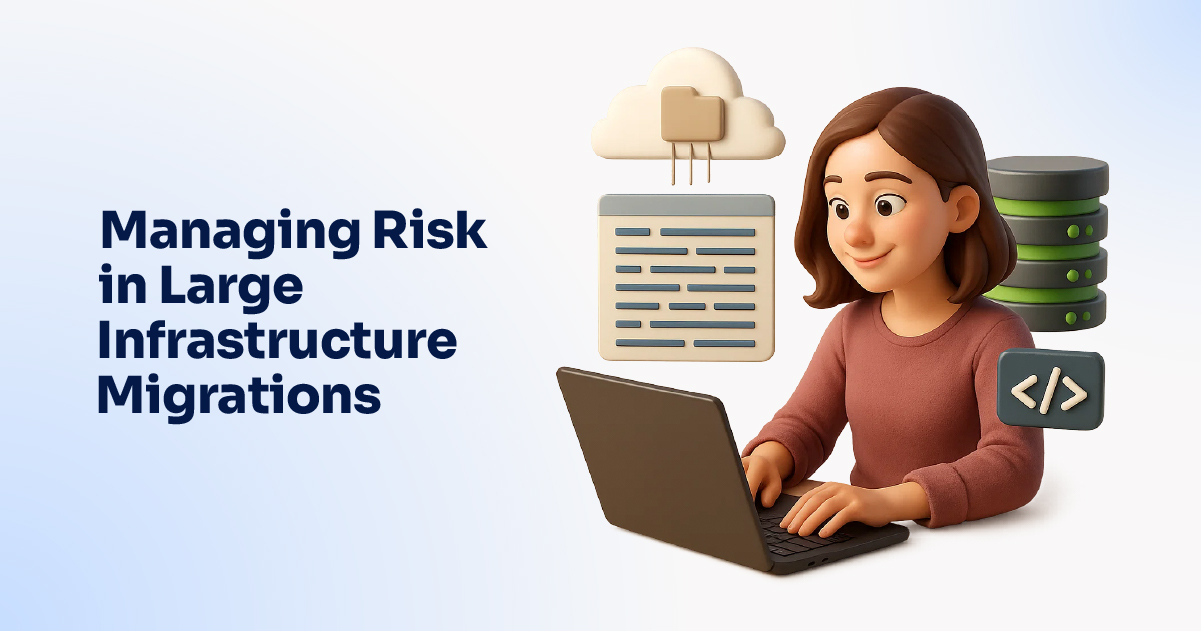
In today’s rapidly evolving digital landscape, businesses are constantly striving to stay competitive, agile, and resilient. One of the most transformative ways they achieve this is by undertaking large-scale infrastructure migrations—especially moving systems, applications, and data to the cloud. However, such extensive changes bring inherent risks that, if not carefully managed, can result in downtime, data loss, security breaches, or massive financial costs.
Proper risk management in infrastructure migration is not just a technical necessity—it’s a strategic imperative. In this blog post, we’ll explore the core risks involved in large-scale infrastructure migrations and outline key strategies for mitigating them effectively.
Understanding the Complexity of Large-Scale Migrations
Large-scale infrastructure migrations involve transitioning critical workloads, data, and operations from legacy environments to modern platforms like cloud or hybrid infrastructures. These migrations can be driven by a need to modernize IT systems, scale more efficiently, reduce operational costs, or improve performance.
Such transitions are complex due to:
- The scale and volume of data involved.
- Interdependencies between various systems and applications.
- Compliance and regulatory concerns.
- The need to ensure minimal disruption to ongoing business operations.
Each of these elements presents potential points of failure—and thus, risks that must be carefully addressed.
Major Risks in Infrastructure Migration
1. Downtime and Business Disruption
The most immediate risk during a migration is unplanned downtime. Any interruption in services can affect customer experience, productivity, and revenue. Downtime during peak business hours can have a devastating impact on user trust and business continuity.
2. Data Loss or Corruption
During migration, there’s always a possibility of data getting lost, corrupted, or incorrectly transferred. Without proper backups and data validation processes in place, these incidents can cause irreversible damage.
3. Security Vulnerabilities
Migration opens up temporary gaps in the security framework. Misconfigured servers, insecure data transfer protocols, and unauthorized access can lead to breaches. It’s critical to secure sensitive data during every phase of the migration.
4. Compliance and Regulatory Issues
Companies operating in regulated industries must ensure compliance with data privacy laws like GDPR, HIPAA, or SOX. Improper handling of sensitive data during migration can result in legal consequences.
5. Budget Overruns and Delays
Without a detailed roadmap and scope, large-scale migrations often exceed budget and time estimates. Scope creep, unforeseen technical challenges, or lack of skilled personnel can cause projects to spiral out of control.
Best Practices for Managing Migration Risks
Effectively managing risks starts with careful planning and a proactive approach. Here are some proven strategies to keep your migration on track and minimize risk:
1. Comprehensive Assessment and Planning
Begin by auditing your current infrastructure. Understand the dependencies, workloads, and data flows across your systems. Create a migration plan that includes risk assessments, resource allocation, scheduling, and fallback strategies.
Use tools to evaluate which applications are cloud-ready, which require refactoring, and which should be retired. This foundational work prevents unexpected roadblocks during the migration.
2. Choose the Right Migration Partner
Working with an experienced provider of Cloud Migration Services can make a significant difference. Experts bring industry best practices, security frameworks, and tools to ensure a smooth transition.
A good partner will also help create a customized strategy aligned with your business objectives while identifying and mitigating specific risks early on.
3. Implement a Phased Migration Strategy
Avoid the “big bang” approach. Instead, migrate in phases—starting with less critical systems before moving to core operations. This incremental strategy provides room to learn, adjust, and minimize disruption.
Each phase should include testing, validation, and monitoring to confirm that the migrated systems are stable and secure.
4. Backup and Disaster Recovery Planning
Always have a full backup of all data and systems before initiating migration. Test your disaster recovery and rollback plans so that, in the event of failure, systems can be restored quickly.
Disaster recovery planning is not just about having backups; it’s about ensuring minimal downtime and rapid restoration of services.
5. Maintain Robust Security Protocols
Security should be embedded throughout the migration lifecycle. Use encryption for data in transit and at rest, secure APIs, and enforce access controls.
Work with your migration team or Cloud Migration Services provider to conduct regular security audits and compliance checks.
6. Engage Stakeholders and Communicate Transparently
Stakeholders—from IT and management to end-users—should be part of the migration process. Keeping everyone informed and involved helps set expectations, reduces resistance to change, and ensures smoother adoption of the new infrastructure.
Monitoring and Post-Migration Optimization
Migration doesn’t end with the last workload moved. Ongoing monitoring, performance tuning, and optimization are critical to realizing the full benefits of the new environment.
Track KPIs related to system uptime, user satisfaction, performance metrics, and security compliance. Continuously optimize workloads and costs to align with business goals.
Conclusion
Large-scale infrastructure migrations are pivotal to digital transformation—but they come with high stakes. By understanding the risks involved and implementing a structured, secure, and well-managed approach, businesses can navigate the complexities of migration with confidence.
Partnering with a reliable provider of Cloud Migration Services ensures that your transition is smooth, secure, and aligned with strategic goals. The right guidance can turn a risky venture into a successful leap toward innovation and growth.
Is your business planning a large-scale infrastructure migration? Start by assessing your readiness and finding a trusted partner to guide your journey. When done right, migration becomes a launchpad for modernization—not a source of setbacks.
